Last week, I read a Times magazine article which shared that 25% of all dollars spent on groceries in the US are spent at Walmart. This made me realize that it’s been awhile since I last posted about shopping at our local market – two years – and I thought I’d share some more about the market where we usually get our groceries post-COVID. This is because “where do you get your food” is one of the questions that we get asked the most about living here.
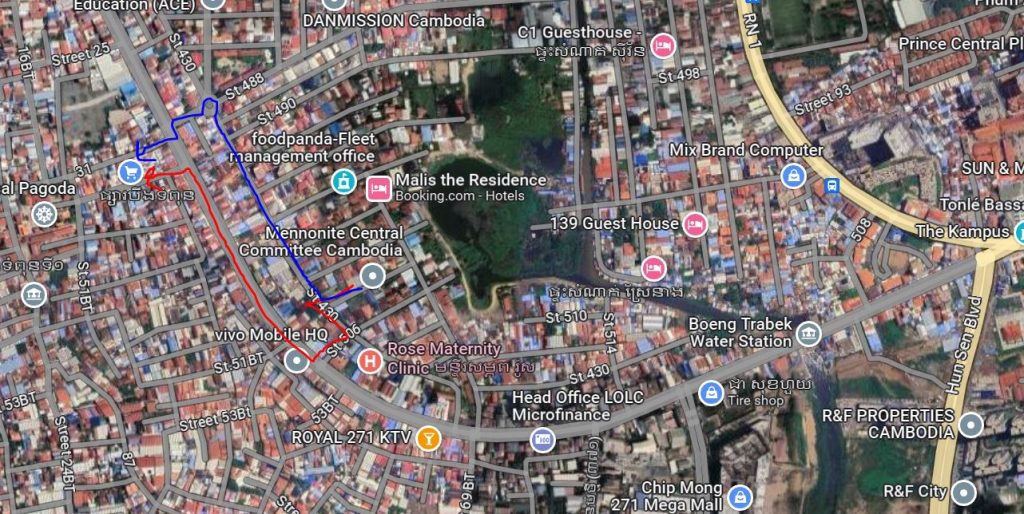
Boeung Tumpun market is the traditional market that’s closest to our house in Phnom Penh but it’s on the opposite side of what old timers call the dike road. This elevated road once marked the edge of Phnom Penh, protecting the city from flooding, but is now a critical but congested thoroughfare that’s too small for the many cars in Phnom Penh today.
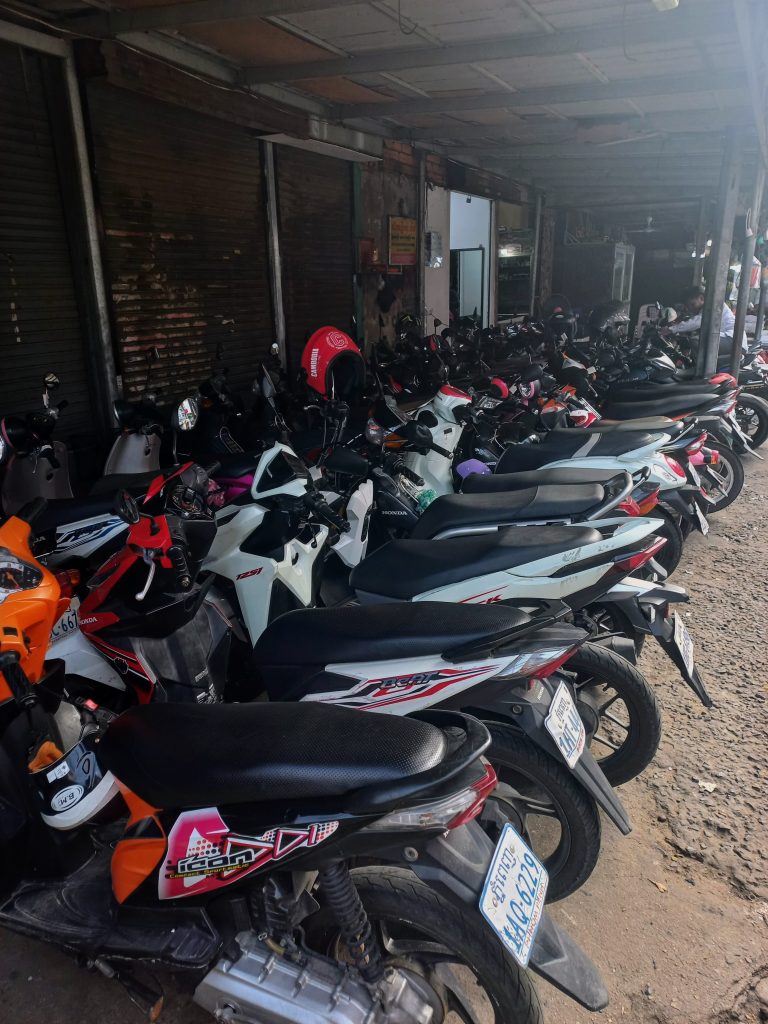
Boeung Tumpun market is within walking distance but I often take the electric moto since I usually buy a lot of groceries at a time. While some people drive their motos into the market, I always start my trips there by dropping my moto off with a guard. Larger markets will have several moto drop-offs but Boeung Tumpun only has one and it can be quite crowded if you arrive at the wrong time.
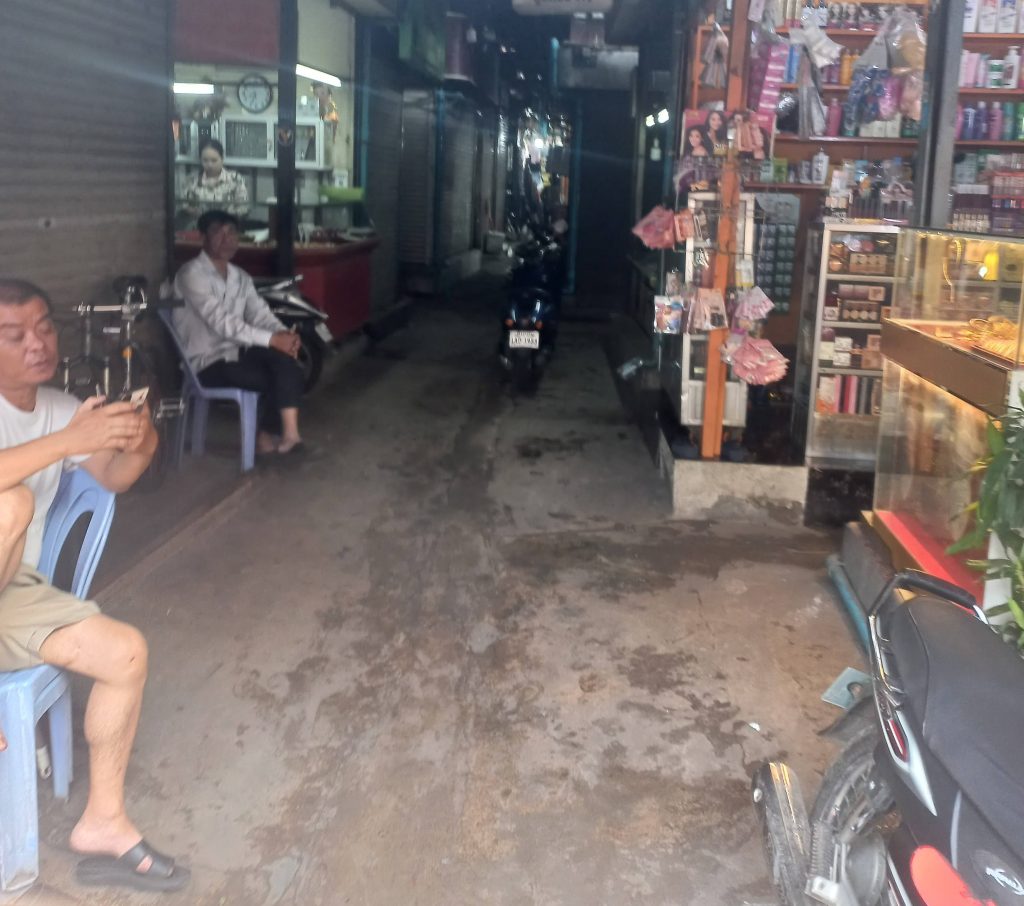
I then walk through the market proper to the back alley behind it where most of the grocery vendors are. The few grocery vendors inside the market are more expensive than those on the street. The rent for stalls in the market is higher than just renting a spot on the street but it does offer added security and easy storage.
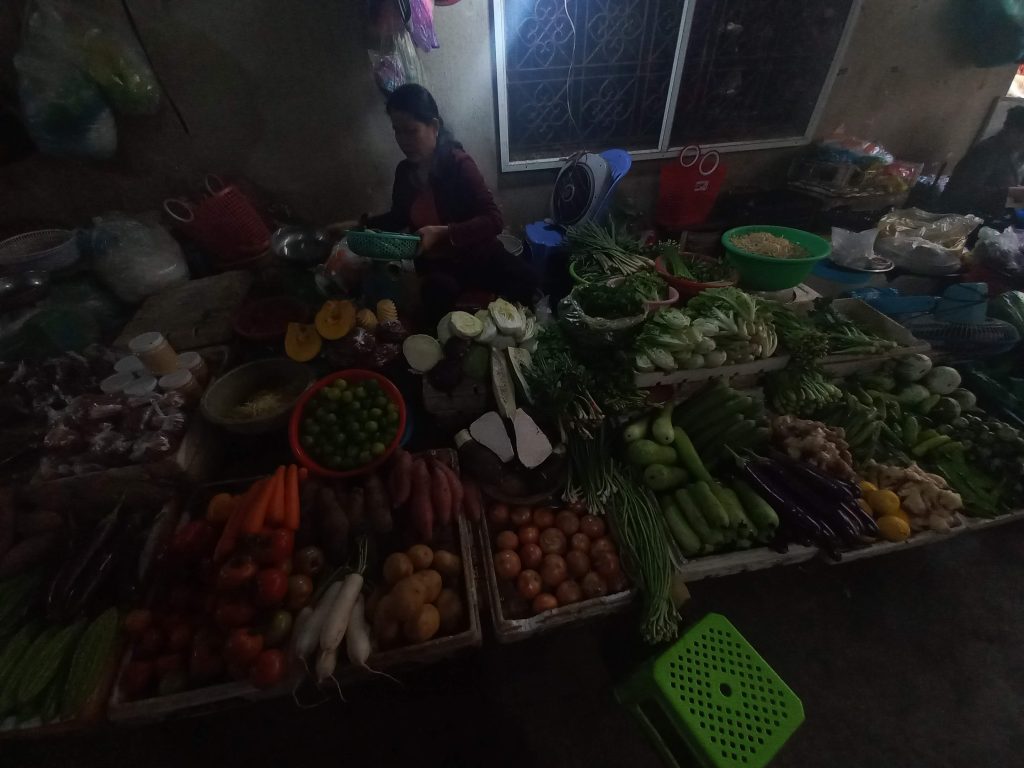
This is my usual vegetable vendor. As I mentioned in my last post, she’s from Pea Reang district, Prey Veng province which is one of the areas where I managed projects during my last term. I settled on her because of that connection. Like most vendors, she slightly overcharged me the first few times I bought from her but, as I kept on coming back, she started charging me normal prices and gave me freebies to make up for the earlier overcharging. I’ve consistently had this experience with vendors at the markets here, as long as they don’t excessively overcharge me I keep on coming back and prices soon normalize.
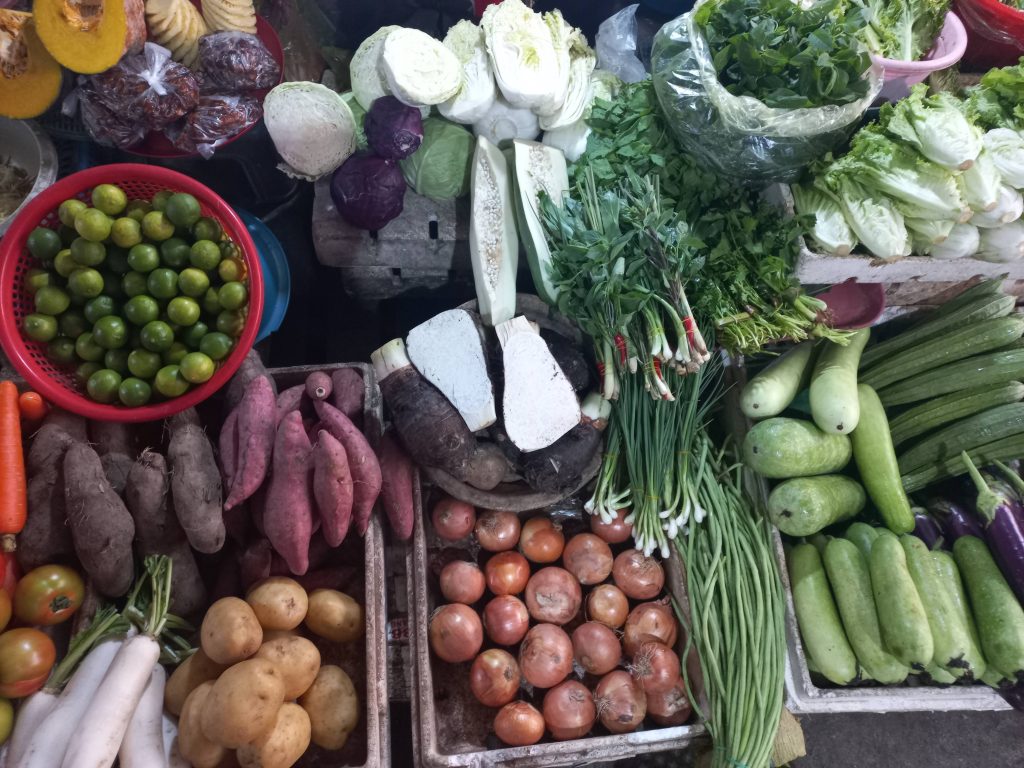
Some of her produce comes from Prey Veng but most of it she buys from wholesalers at the Chbar Ampov market. The Chbar Ampov market sits on the bottom of the X crossing of the Mekong, Sap, and Bassac rivers. It’s a large market that takes in produce from the countryside by boat and truck, then sells wholesale to smaller market vendors across the city.
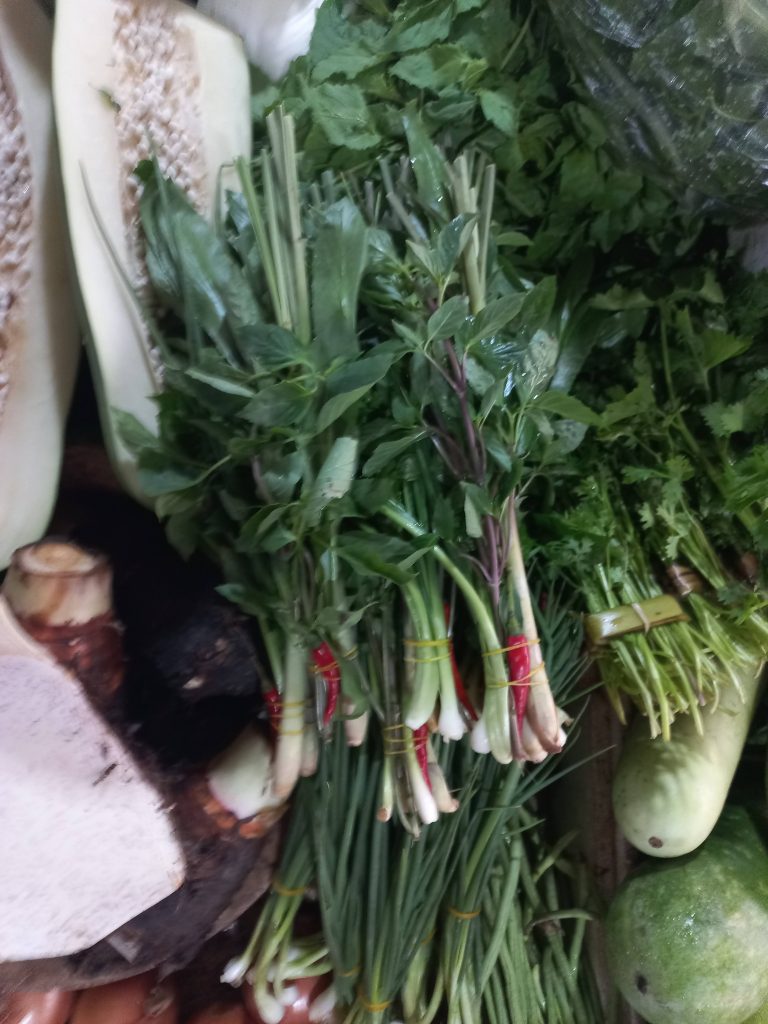
I wrote about these “Cambodian Spice Packets” soon after we arrived in Cambodia back in November 2019. They’re a common site at most of the vegetable vendors though many vendors also sell Kroeung paste, Curry paste, and other pastes already prepared. Our Office Cook, Ming Ramy, cautions that many of the pre-made pastes aren’t fresh.
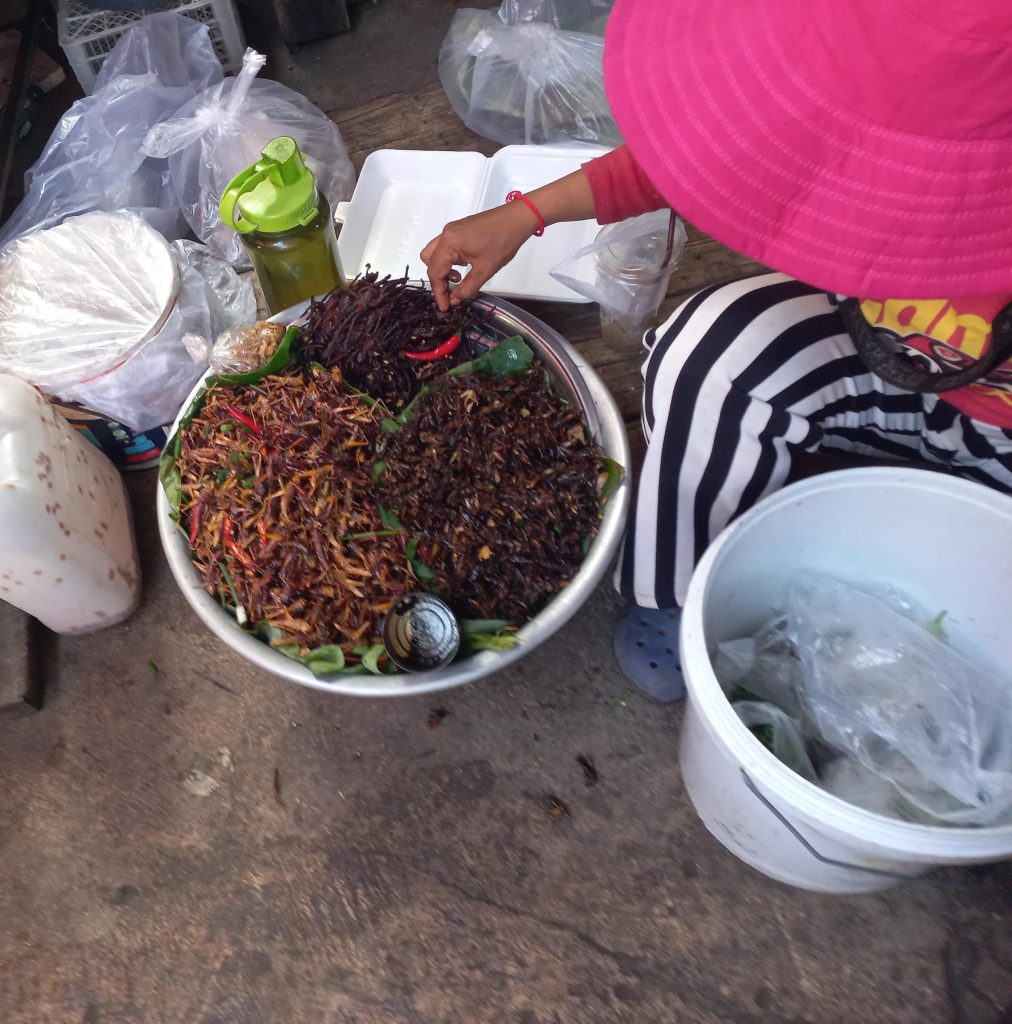
If you’re feeling hungry for a snack at the Boeung Tumpun market there are many vendors selling street food. This includes delicious fried crickets, silkworms, and other edible insects for sale. I’m a bit squeamish about the silkworms but the crickets – infused with lemongrass and chilis – are a delicious source of protein.
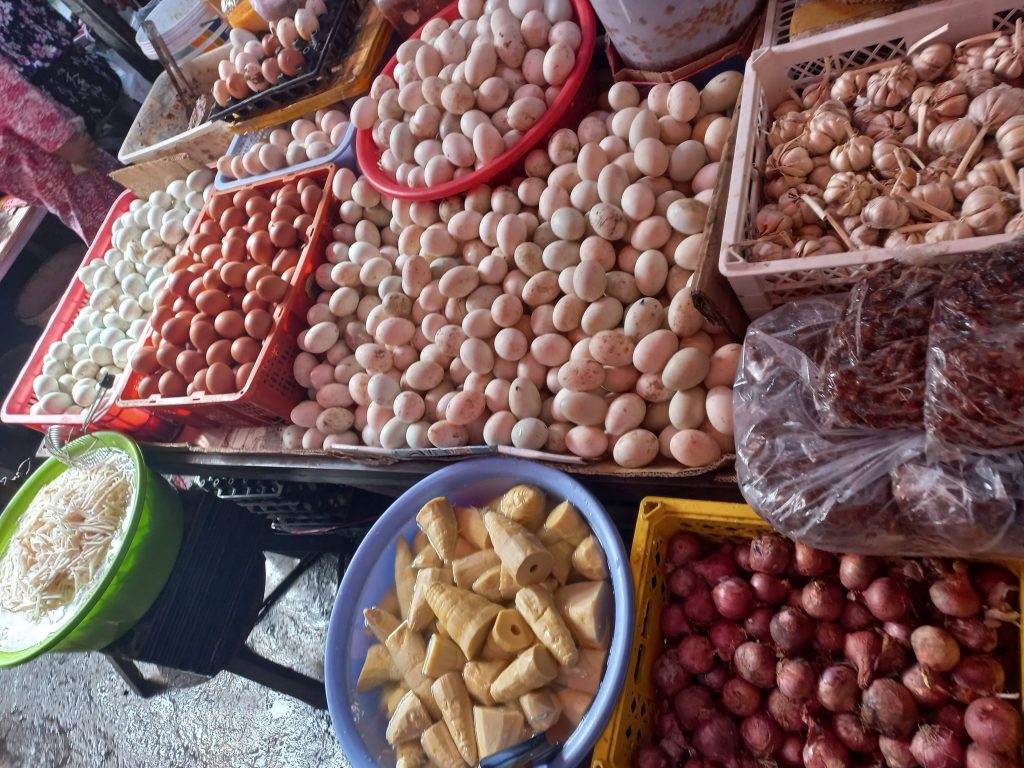
This is one of many stands selling chicken and duck eggs. Some stands also sell quail eggs but it’s less common. This particular stand is also selling prahok, bean sprouts, bamboo sprouts, red onions, tamarind paste, and garlic.
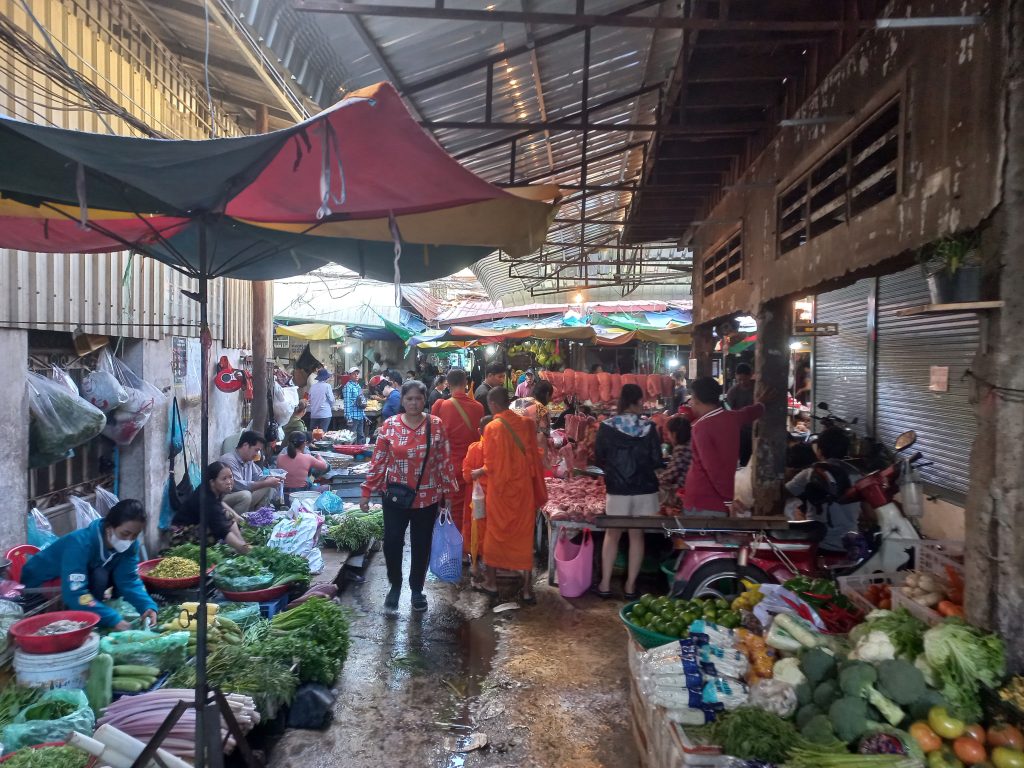
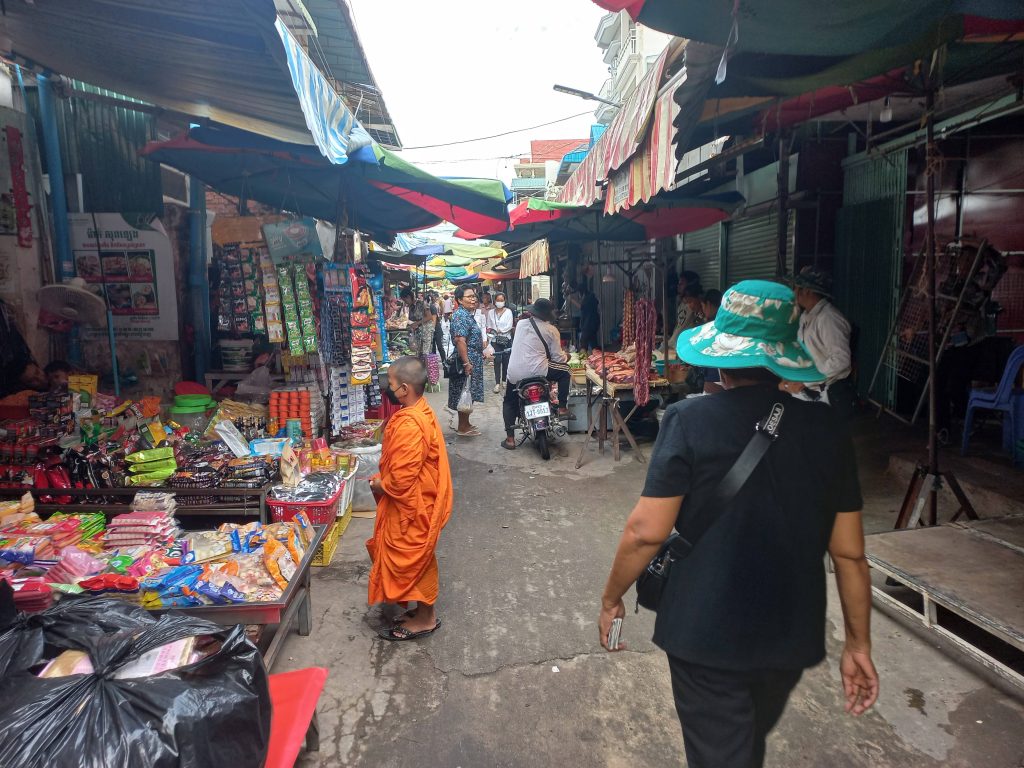
Buddhist Monks frequent the market in the morning, collecting food offerings from the vendors and in return chanting blessings in the Pāli language.
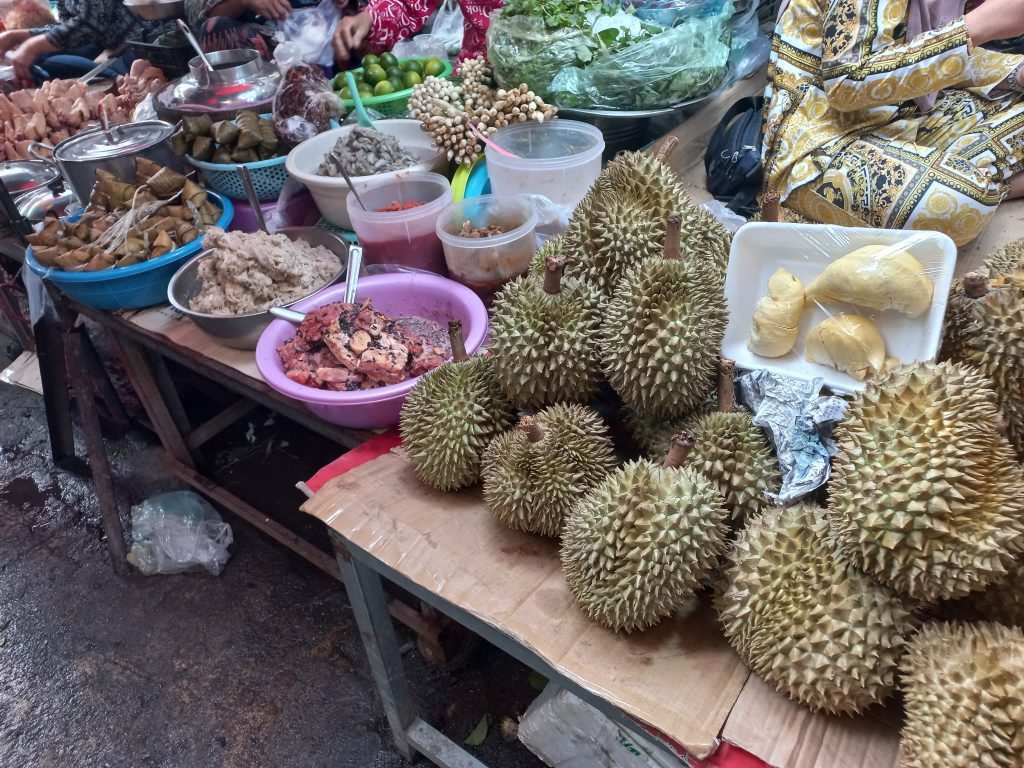
In general, traditional Cambodian markets offer more olfactory stimulation than Western grocery stores or even Western farmer’s markets. But some sections are more fragrant than others – like these two stands; one is selling fermented fish paste and the other Durian fruit, which has the infamous promotional line “tastes like heaven, smells like hell.“
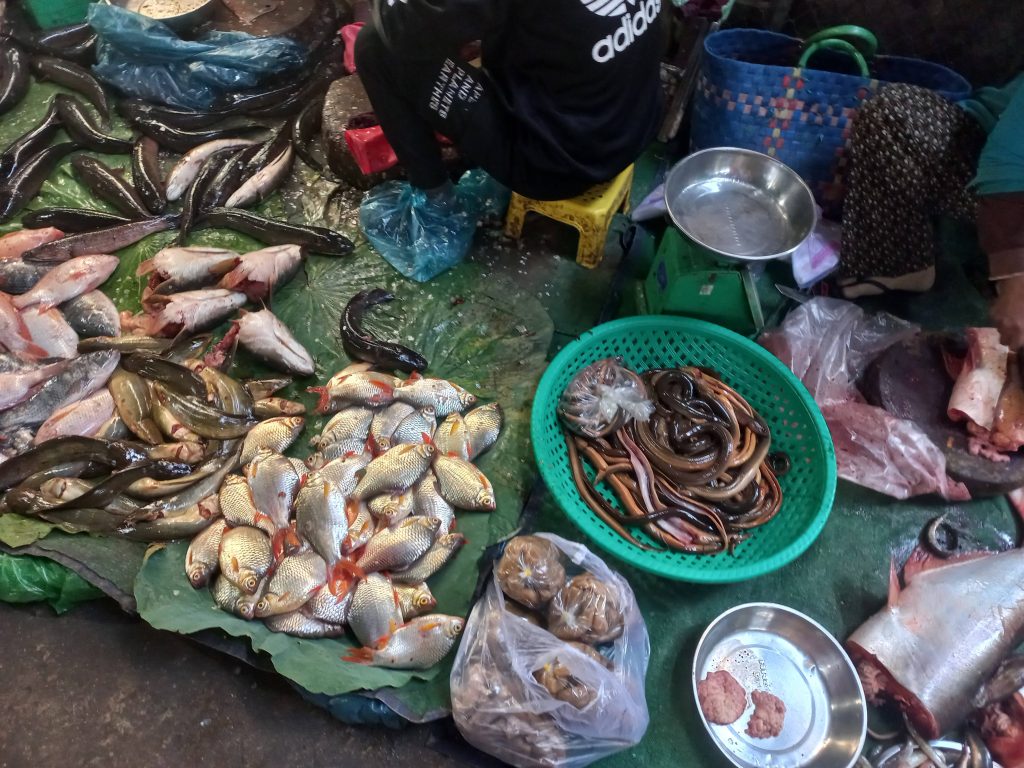
Traditional Cambodian markets have rich offerings of river fish and eels. These are staples of the traditional Khmer diet but in recent years prices have increased as Cambodia’s natural fisheries have declined. It’s becoming more common – especially in Phnom Penh – to see ocean fish and farm raised fish alongside the natural river fish.
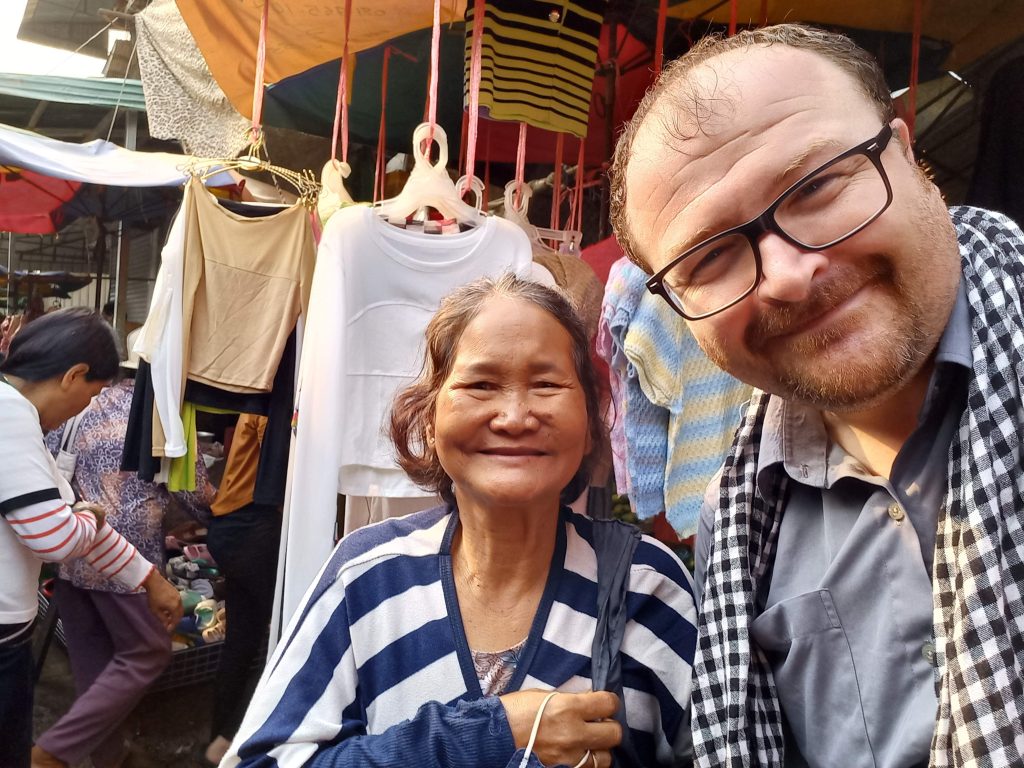
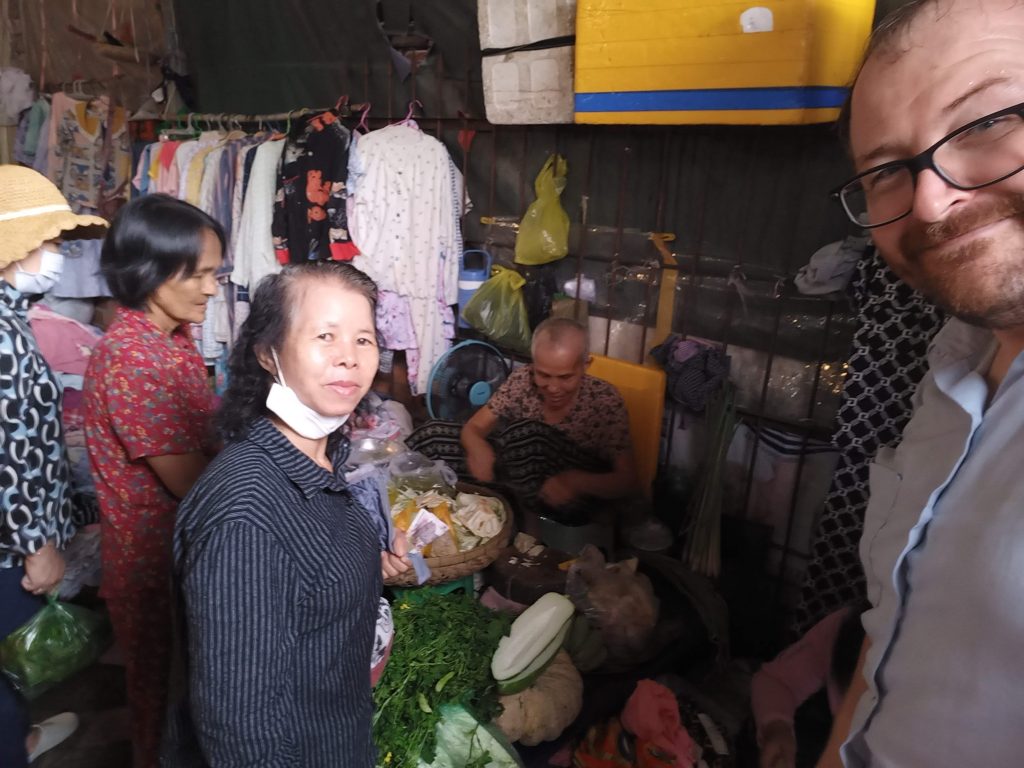
The local market is a great place to run into neighbors and old friends. Ming Khom was a cleaner with MCC for 25 years before retiring in early 2020. Ming Ramy is still with MCC – she’s approaching 30 years now – and is seen here buying from our new Connecting Peoples Coordinator’s Grandmother who is a vendor at the market.
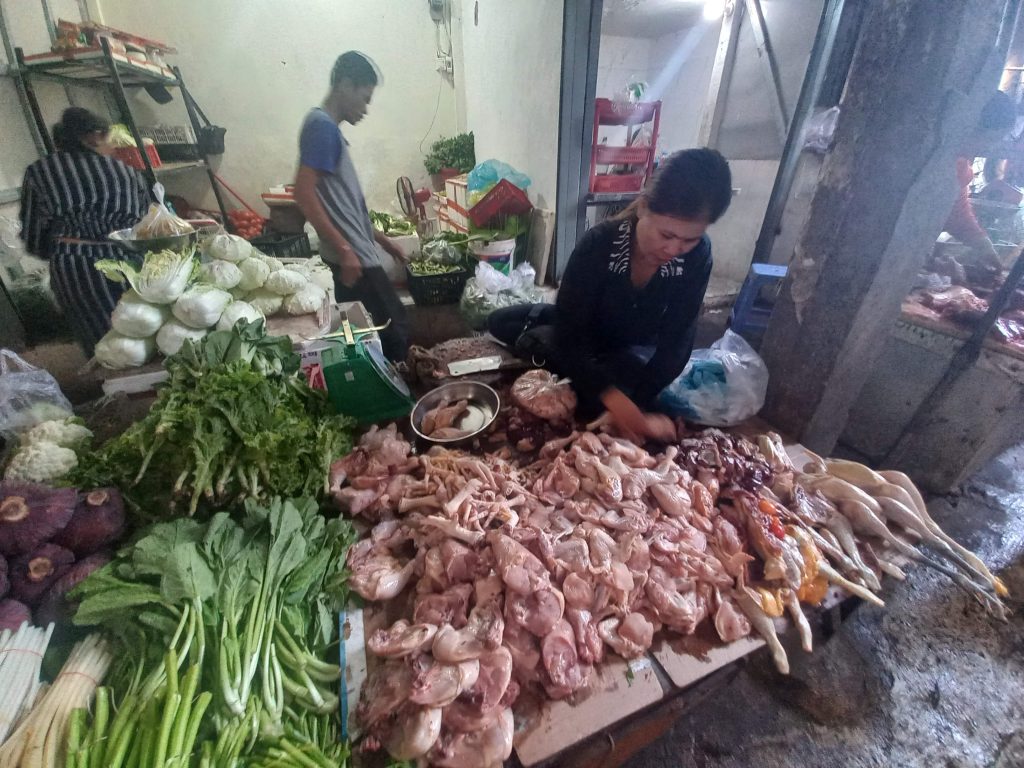
Ming Ramy introduced us to the vendor we buy chicken from. She always has fresh chicken and has never overcharged us. She also sells chicken heads which is inexpensive and has become our dog Leena’s staple food since the veterinarian told us ‘no more rice’ for Leena, which was fine by us but difficult for our Khmer friends to understand. The chicken vendor is the rare Christian at the market so her stall is closed Sundays.
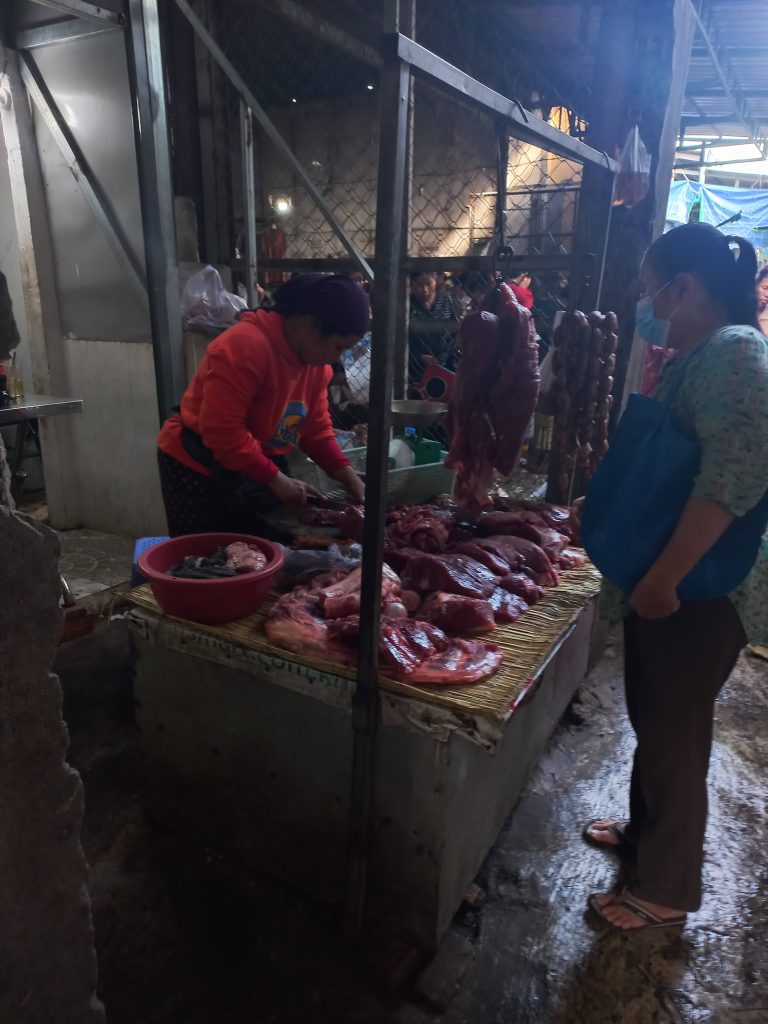
Beef is very expensive compared to other meat – around $4.5 USD a pound – so we don’t buy it often, but when we do we usually get it from the vendor beside the chicken vendor. She’s come to know us from our frequent stops at chicken vendor and always gives us a good price. We often check in with Ming Ramy to know what a fair price is for beef, pork, or fish because the prices have fluctuated a lot because of the pandemic and Russia’s invasion of Ukraine.
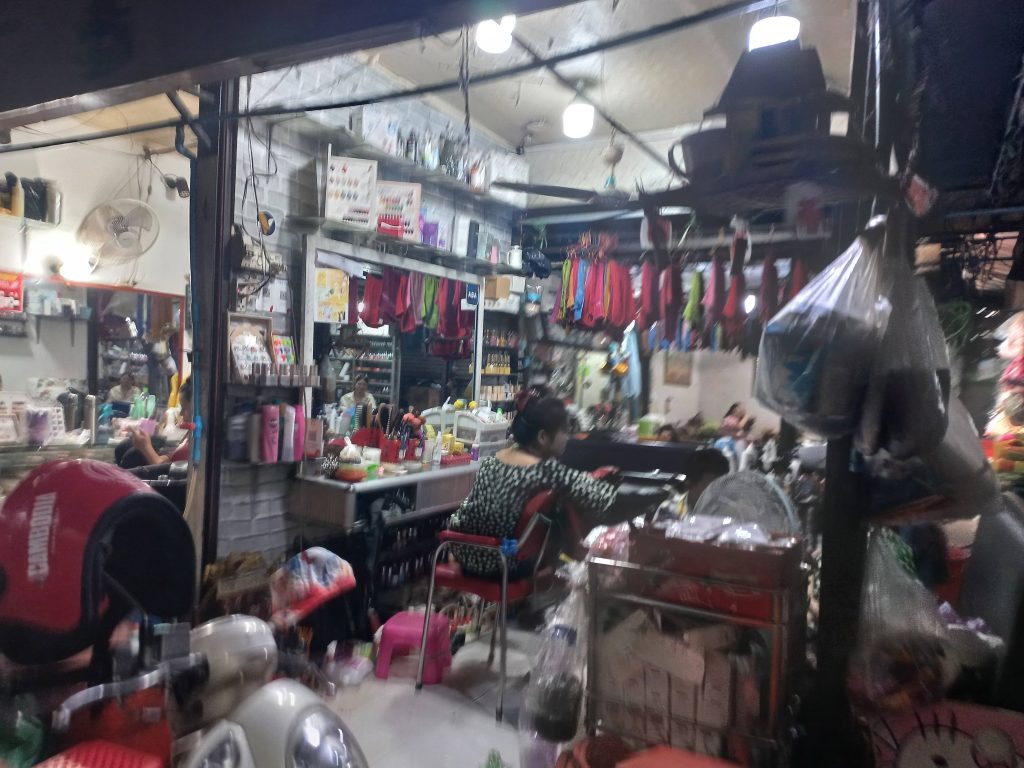
Heading inside off the street, the market proper has a variety of stalls including stylists, goldsmiths, food stalls (serving breakfasts like kauy teav in the morning), general stores, rice and flour shops, and so on.
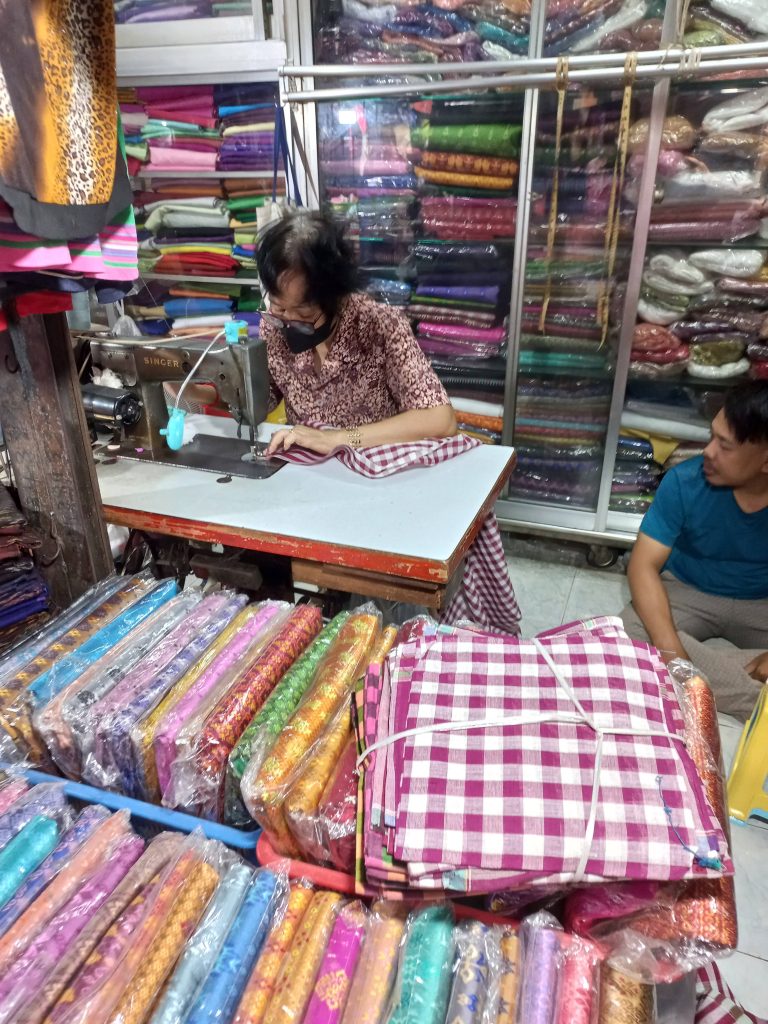
This includes sewing, seamstress, and fabric stalls. It’s a great place to buy a new Krama or have some sewing done, but I’d probably recommend heading to the Olympic market instead for larger purchases.
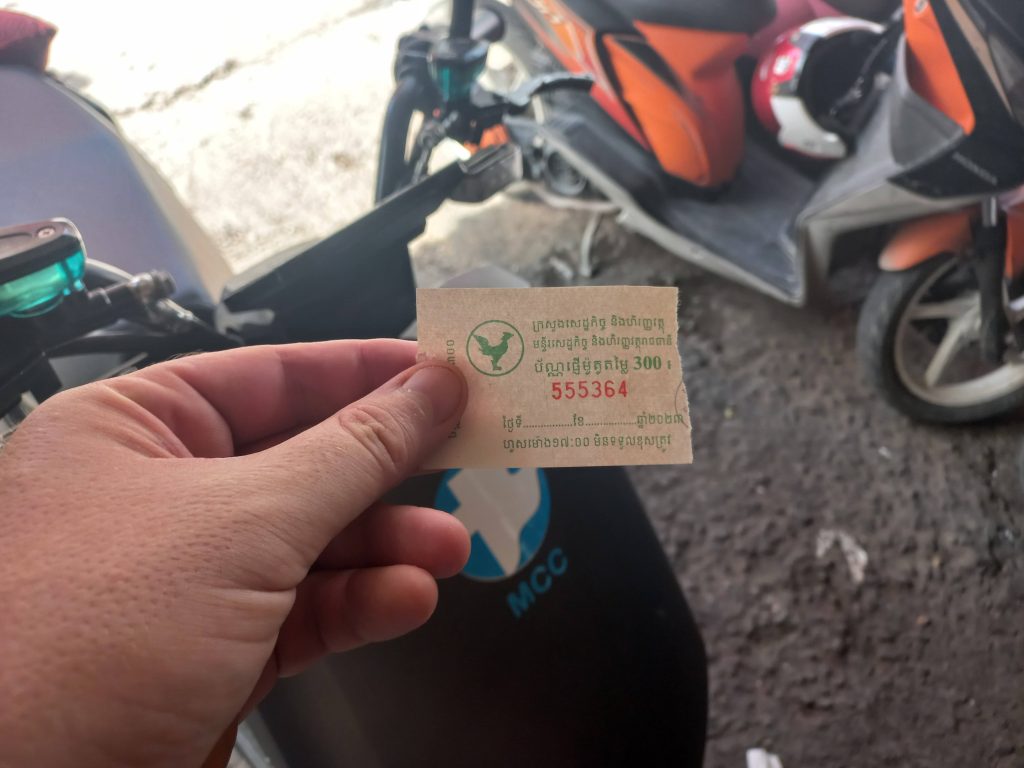
Exiting the market, it’s important to have your moto ticket. If you lose it you’re in for a difficult time unless you know the moto guard. The cost for dropping off your moto is 1000 Riel or about .25 cents.
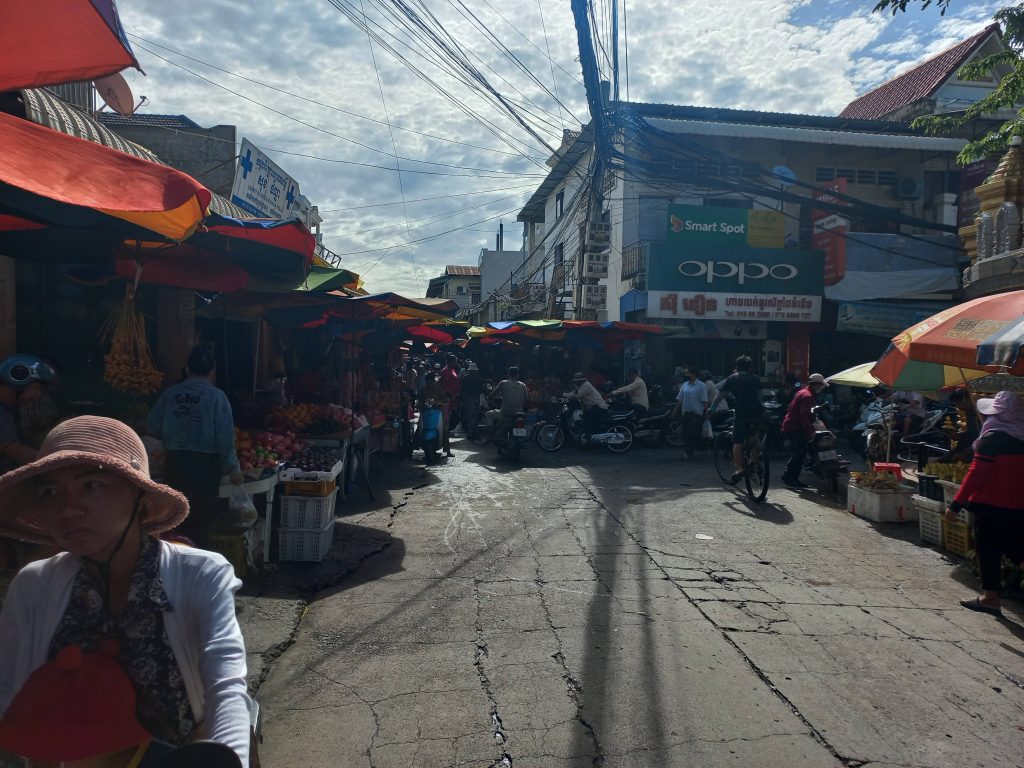
But what about fruit? I’ve mostly stopped buying fruit in/behind the market because I’m usually loaded with all the vegetables and meat I can carry by the end. Instead, I drive around the market to where the back alley ends. There’s an overflow of vendors here and many sell fruit.
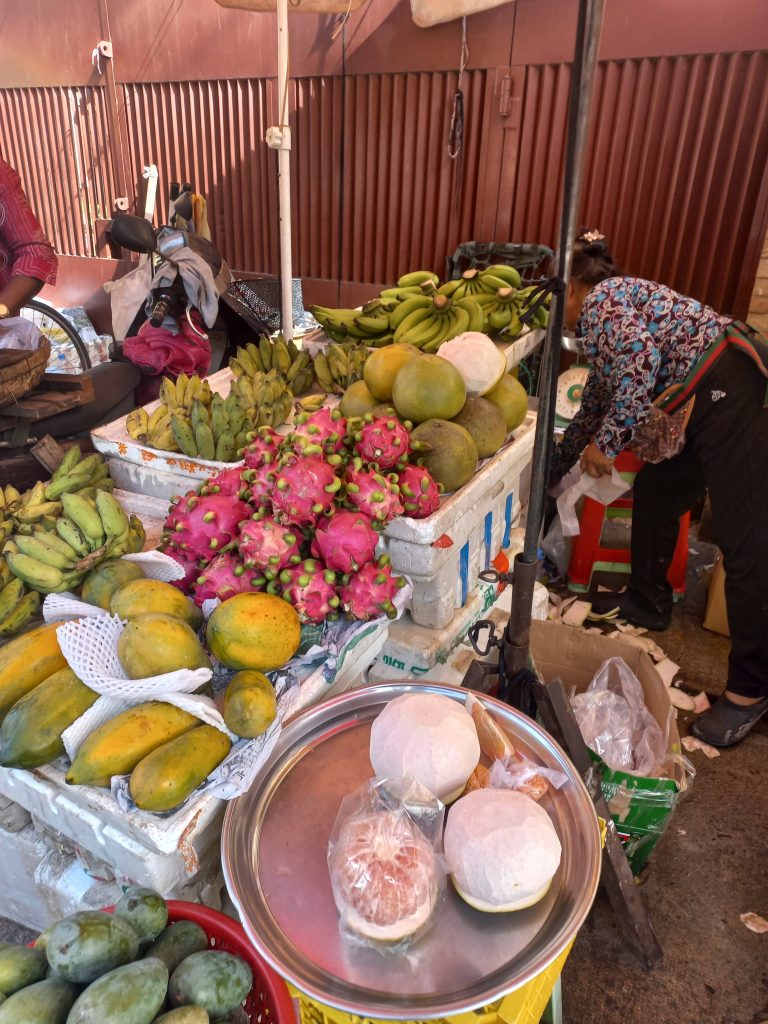
I often visit this vendor who sells Papaya, Mangos, Pomelo, Dragonfruit, and Bananas. I also stop at vendors who come into the city with seasonal fruit from the countryside. Since I drive up to the stand on electric moto it’s easy to load up on fruit instead of needing to take two trips.
Very cool and interesting marketplace. Thanks for sharing this, it’s fun to see how your grocery shopping experience compares to ours!! Aunt Sandra would enjoy the variety of vegetables, fruits and spices! xoxo
Yummy!!!
Fried crickets are great!